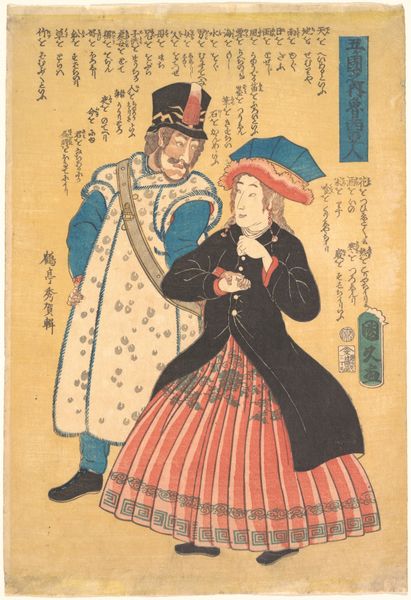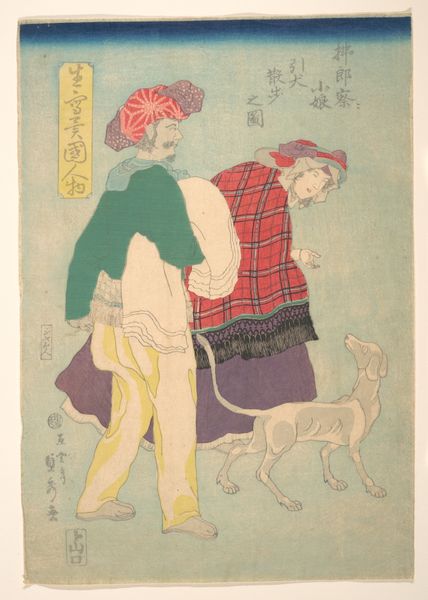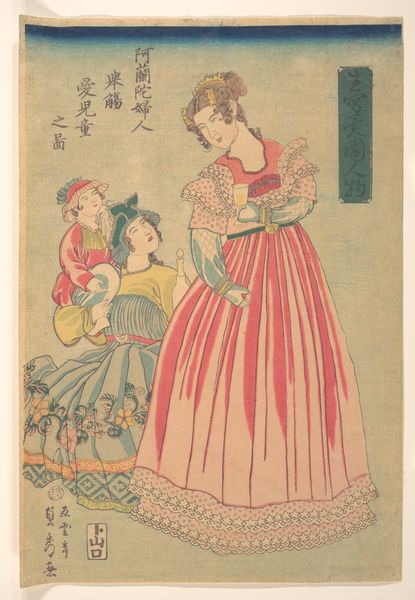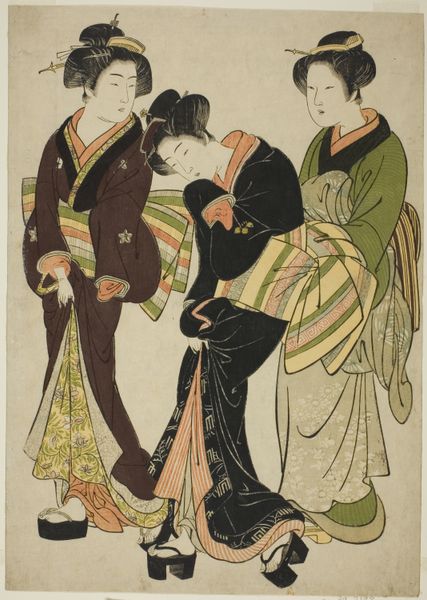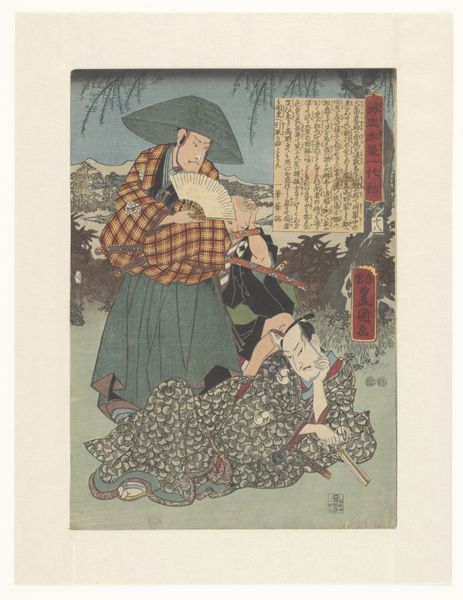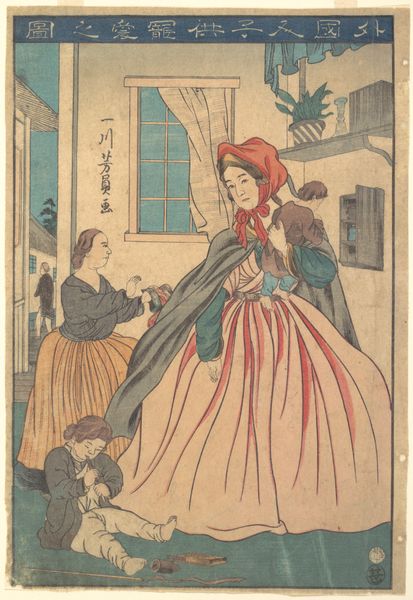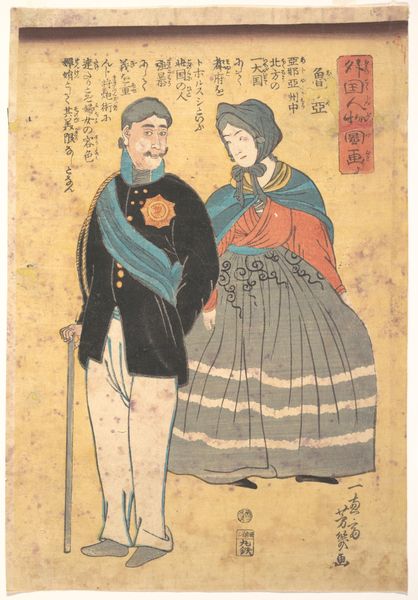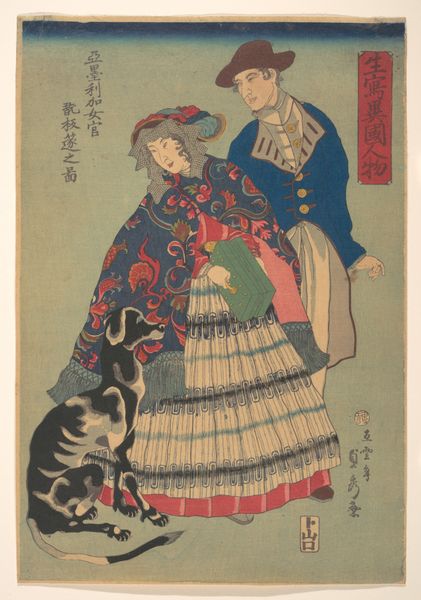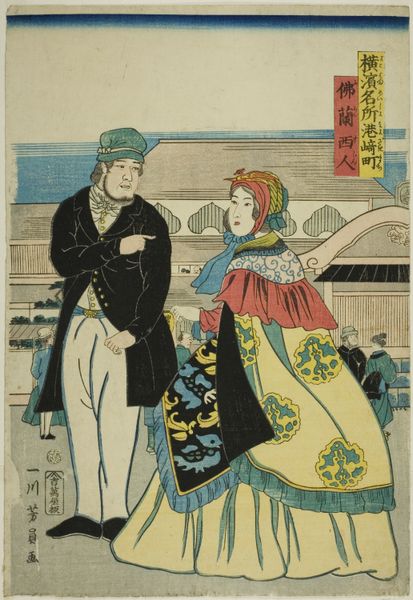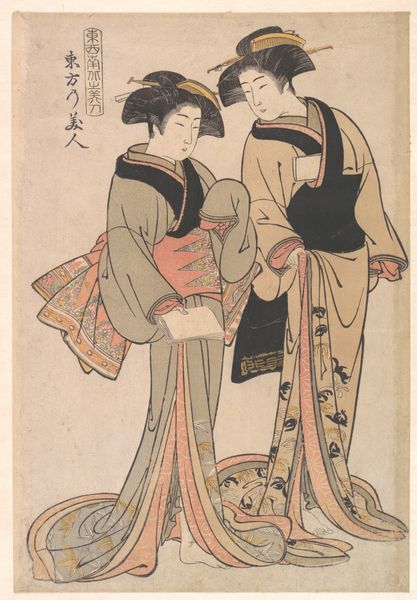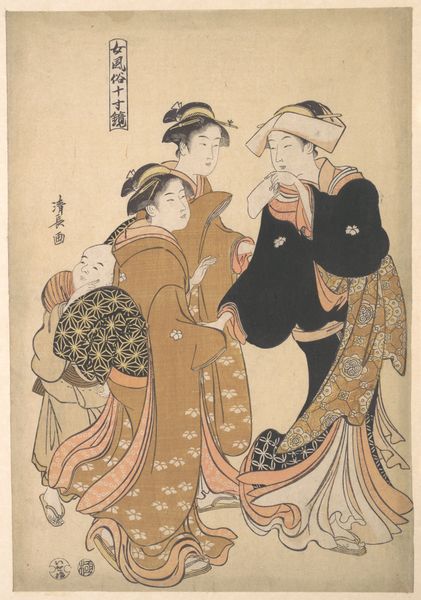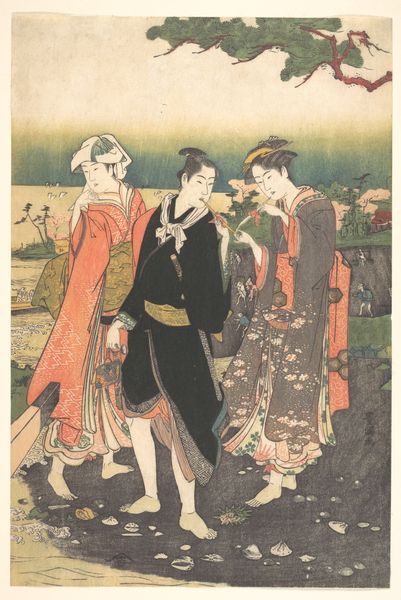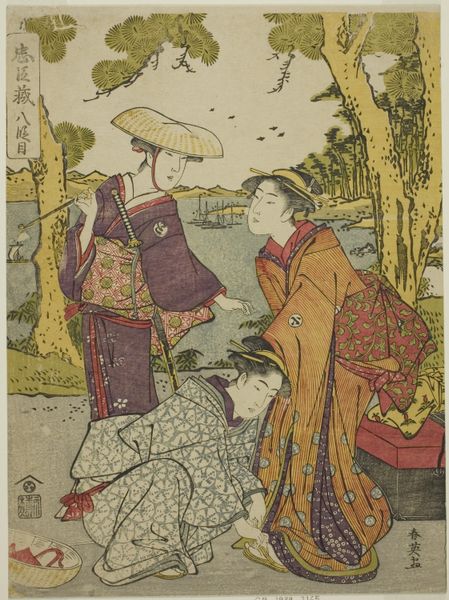
print, woodblock-print
#
water colours
# print
#
asian-art
#
ukiyo-e
#
japan
#
woodblock-print
#
soldier
#
genre-painting
Dimensions: Image: 14 1/8 x 9 3/4 in. (35.9 x 24.8 cm)
Copyright: Public Domain
Curator: I’m immediately struck by the bright, almost cartoonish quality of this image. There's an arresting theatricality to the characters. Editor: What you're sensing is Ippōsai Yoshifuji’s woodblock print, "Russian Soldier with His Family," created around 1861. It is an interesting example of ukiyo-e prints, now housed at the Metropolitan Museum of Art. It highlights an era of expanding global awareness. Curator: Global awareness certainly—look at how this artist is trying to capture Westerners. Notice the costume details, clearly interpreted through a Japanese lens. That peculiar hat of the woman speaks volumes. Editor: Yes, the cultural interpretation is critical. Yoshifuji, like many artists of the time, used these images to both inform and subtly comment on the influx of foreigners into Japanese society, their dress, their customs, and their perceived roles. Curator: So, these symbols aren't purely observational. The dress and demeanor are not simply recorded but also... encoded. The woman's somewhat demure pose and the soldier’s rigid stance might be conveying specific cultural expectations or perhaps even mild critique? Editor: Precisely. The iconography here speaks to a constructed narrative, not just of Russians, but of the idea of the “foreign” itself. The color palette, almost childlike, hints at a society processing this new reality. Curator: It's a potent combination: the woodblock print tradition meets cross-cultural representation. The fact that the family is the chosen subject reinforces how foreign presences might be influencing domestic and social structures within Japan at that time. Editor: Absolutely. We must also think about the audiences for these prints. Who was looking at this, and what message was it conveying about power dynamics? This seemingly simple print speaks volumes about a transformative period in Japanese history, made accessible through familiar visual language. Curator: I see how, despite the exotic subject, it also anchors itself to local perspectives, revealing cultural memory embedded within visual motifs, reflecting an evolving socio-political landscape. A compelling blend of art and social commentary.
Comments
No comments
Be the first to comment and join the conversation on the ultimate creative platform.

